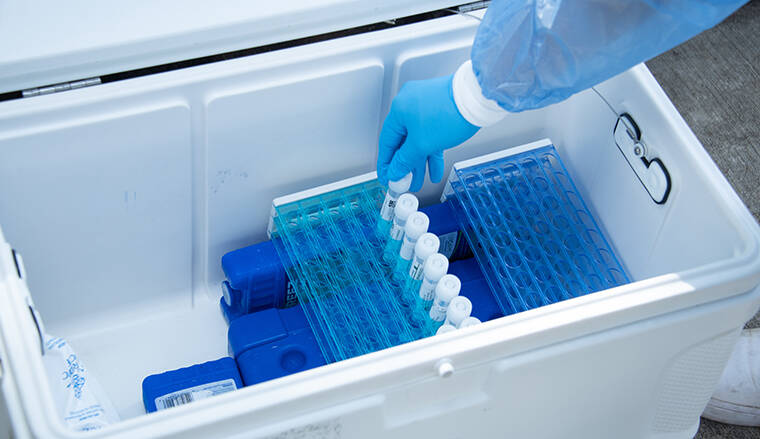The Hawaii Department of Health’s Laboratories Division today confirmed the presence of BA.2, the new lineage of the COVID-19 omicron variant, in the state.
In the most recent variant report Opens in a new tab, DOH said whole genome sequencing had confirmed eight total cases of BA.2 from specimens collected between Jan. 6 and 19 from Diagnostic Laboratory Services in Hawaii.
Edward Desmond, State Laboratories Division Administrator, could not confirm which islands the specimens came from, but said they are most likely from Oahu.
“One of the reasons we’re concerned about it is in some places including Denmark and Kolkata, when BA.1 and BA.2 are both present together, the BA.2 has expanded and become the dominant strain and there’s a possibility that might happen here,” said Desmond. “That suggests there’s something more infectious about the BA.2 strain.”
In Denmark, where BA.2 is gaining ground, there has been a modest surge of cases, but no increase in hospitalizations, he said. Because BA.2 is so new, however, much remains unknown about the strain.
Scientists around the world are keeping their eyes on this descendant of the omicron variant, which has been called the “stealth variant” and has been found in more than 50 countries, including the United States, according to the Associated Press.
It has widely been considered stealthier because it does not have the genetic marker — the “S gene dropout” — which made it easy to distinguish BA.1 from the delta variant.
However, BA.2 is still detectable using a PCR test, said DOH molecular biologist Daniel Strange.
Desmond said BA.2 has 21 mutations in common with BA.1, the original omicron strain. But BA.2 also has nine unique mutations not found in BA.1.
He said his lab — which sequences about 200 specimens collected from statewide per week — has eight more samples to sequence for the presence of BA.2.
“We have gone from a single case to now seeing eight, and we’ve received another eight that don’t have the ‘S target dropout’ and I guess are probably quite likely to confirm eventually as being BA.2,” said Strange. “So it may be that we’re seeing the beginning of an emergence of BA.2. It’s not entirely clear, but that is probably the expected path.”
While daily case counts appear to be on the decline, Desmond said the introduction of BA.2 could slow down or delay the end of the surge.
DOH today reported five new coronavirus-related deaths — all on Oahu — and 1,907 new infections statewide, bringing the state’s totals since the start of the pandemic to 1,164 fatalities and 213,174 cases.
The 7-day average of new cases is at 2,421, a 38% drop from two weeks ago, while the average positivity rate remained unavailable due to the state’s temporary pause in processing negative test results.
According to Hawaii Emergency Management Agency dashboard, a total of 373 patients with the virus were in state hospitals today, with 53 in intensive care and 35 on ventilators.
This is why social mitigation measures, including vaccinations, boosters, masking, and avoiding large crowds should continue, said DOH.
The variant report, which usually reflects a lag time of two weeks, also found omicron is now an estimated 99% of all variants circulating in Honolulu County, and 100% of all variants circulating in Kauai, Maui, and Hawaii counties.

